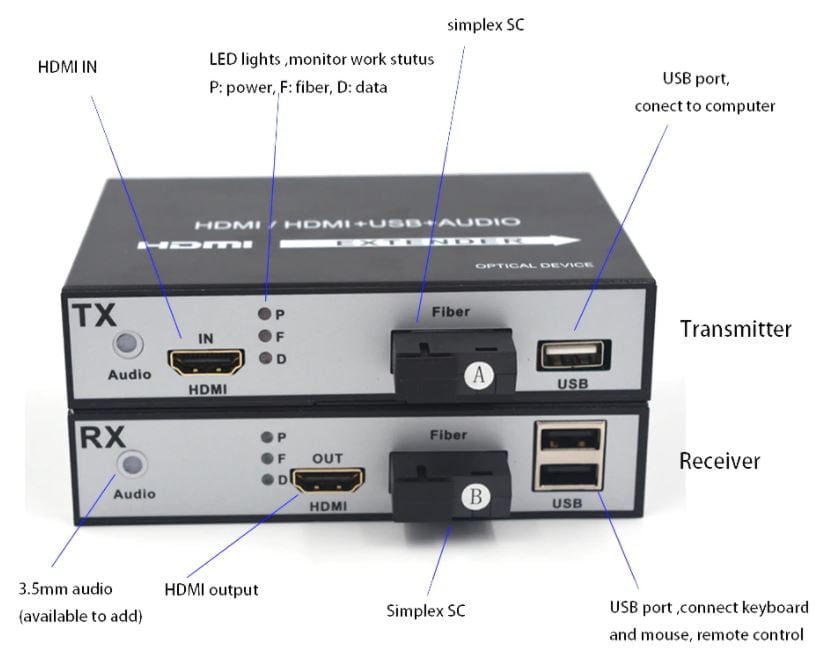HDMI over Fiber optic extenders
What Is HDMI over Fiber optic extenders?
The HDMI over Fiber optic extenders is consists of a transmitter and a receiver that transmits HDMI audio and video signals over a single single-mode fiber. In multimedia applications, HDMI video signals, audio and video signals, and long-distance transmission are often required. However, when using ordinary cable for long-distance transmission, there will always be an output signal difference, which is easily disturbed, and the displayed image may appear blurred, tailed, and separated.
At the same time, the transmission distance is short, and multiple cables are required to transmit these signals at the same time, which cannot meet the requirements of long-distance transmission in multimedia information distribution, etc., and the transmission is completely solved by using the HDMI optical transceiver, and the transmission distance is 0-20 km. At the same time, the optical transceiver has the advantages of small attenuation, wide frequency band, strong anti-interference performance, high safety performance, small size and light weight, so it has incomparable advantages in long-distance transmission and special environment. . HDMI optical transceiver equipment is used in multimedia systems, which saves construction costs and complexity of routing, and ensures high-quality targets.
HDMI over fiber optic video converter transmitter and receiver set is a device that enables the transmission of high-definition (HD) video and audio signals over long distances using fiber optic cables. This technology is commonly used in situations where traditional copper-based HDMI cables are not practical or suitable, such as in large-scale installations, broadcasting, and live events.
The transmitter unit takes an HDMI signal, converts it into an optical signal, and transmits it over a fiber optic cable to the receiver unit. The receiver unit then converts the optical signal back to an HDMI signal and sends it to the display device. This process ensures that the signal is transmitted with minimal loss of quality over long distances.
The use of fiber optic cables provides several advantages over traditional copper-based cables, including increased bandwidth, longer transmission distances, and improved resistance to electromagnetic interference. Additionally, fiber optic cables are thinner and more flexible than copper cables, making them easier to install in tight spaces.
HDMI over fiber optic video converter transmitter and receiver sets are available in a wide range of configurations, with varying transmission distances, resolutions, and audio capabilities. They are commonly used in professional AV installations, as well as in home theater and gaming applications where long cable runs are required.


